The field of utrashort-laser-pulse measurement began when nanosecond pulses were first generated, and they proved faster than available detectors. But FROG didn't come along until pulses were femtoseconds long, and, by then, 100ps pulses seemed dull. But now that FROG can measure about every fs pulse ever generated, we decided to take a look at the ns-pulse measurement problem. And interestingly, it's a lot harder than measuring fs pulses! The required delays are meters long, not just a millimeter. How do you generate such a large delay range, and do so on a single shot?
It's certainly worth trying. Femtosecond lasers are the most stable lasers in the world, in part for fundamental reasons, but also because they're the best measured light pulses in the world. Nanosecond lasers are the least stable lasers in the world, in part because they're the most poorly measured light pulses in the world. You can't improve the shape of a pulse if you don't know it! Perhaps a simple intensity-and-phase measurement device would change things.
In the 1980s, people generated ~50ps delays on a single shot using pulse-front tilt induced by diffracting a pulse from a grating. Can we extend the range to ns? We need much larger tilts! But is it realistic to try to tilt a pulse by 89.9 degrees?
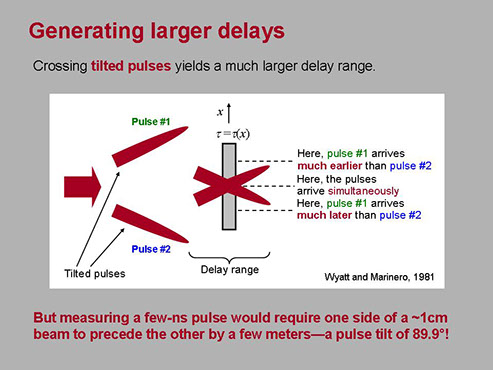
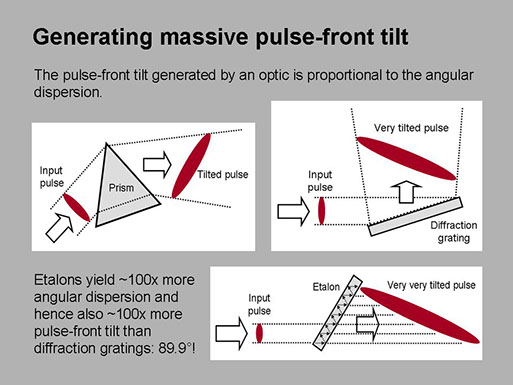
It turns out that sending a pulse through an etalon actually generates the required 89.9 degrees of pulse-front tilt! One side of the pulse precedes the other by more than a meter! And by imaging the etalon onto the crystal, we can maintain the integrity of the pulse in order to measure it.
The nanosecond GRENOUILLE:
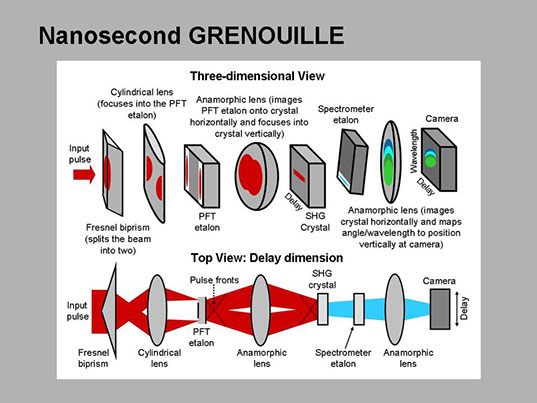
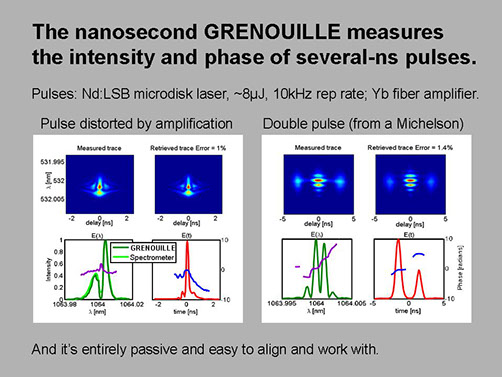
The nanosecond GRENOUILLE measures pulses from a fiber laser very well, including the ever-tricky double pulse.
There are many many ns lasers than fs lasers, and it hasn't been possible to measure their pulses. Perhaps this relatively simple device (Bowlan, et al.) will help to improve them in the future.
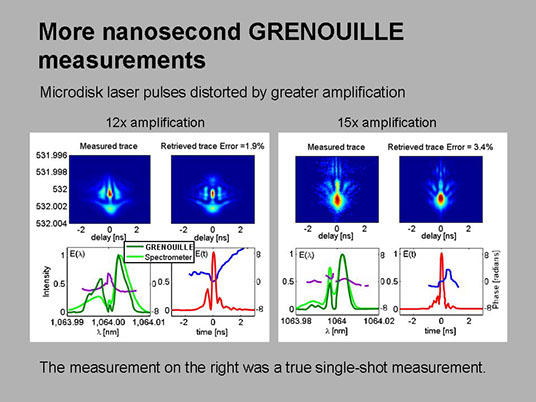
For more detailed tutorials on FROG and GRENOUILLE, check out a fully narrated lecture on them; download any of our lectures on them; read the original GRENOUILLE paper or any of our many papers or book; or visit www.swampoptics.com, where additional tutorials reside.
